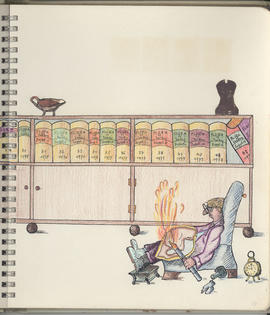- GB/NNAF/P146275
- Person
- 1886-1919
Robert Chapman Davie was born in Lisbon in October 1886, but moved to Glasgow and was schooled there at the Glasgow High School, before going to the University of Glasgow in 1904, where he graduated with a first class honours M.A. in English. This degree included some scientific courses, including one on Elementary Botany taken in 1905, and Davie found himself drawn more to that subject than English, so went on to pursue this by enrolling for another degree, a BSc. in Botany, Chemistry, Zoology and Geology, graduating in 1909 after winning the Dobbie-Smith gold medal for Botany along the way. He stayed at the University of Glasgow, becoming an assistant in the Botany Department before moving to the University of Edinburgh in 1912 to become a Botany lecturer under RBGE Regius Keeper and Professor of Botany, Isaac Bayley Balfour. Davie was given special charge of the large Teachers in Training classes and lectured on hepatics (liverworts) and mosses to Edinburgh University Botany students at the Garden. He carried on with his own studies throughout his teaching career, and soon had enough material to research a doctoral thesis on the subject of pinna-trace in ferns, and he completed this at the University of Glasgow, graduating with a DSc in April 1915 whilst still teaching and working at Edinburgh.
Davie’s research was interrupted in 1914, not by the war at first, but when he obtained a grant from the Royal Society to travel to Brazil to research comparisons between flowering plants. He was still working on the material he collected there when the call to join the military service finally came in 1917.
Due to effects of ill health when he was younger, it was known that Davie would not have been fit for a role in a combative branch in the army, and this may be why he wasn’t called upon to enter service until 1917, despite him apparently offering his services when war broke out. Another reason may be that his specialism in mosses meant that he was heavily involved in the work RBGE was doing in offering specialist advice to those engaged in collecting sphagnum moss to aid the war effort – the moss was used as an alternative to cotton in making would dressings, it being highly absorbent and antiseptic too. Finally though, in 1917 he was enlisted to the Royal Army Medical Corps, to a role which took full advantage of his scientific training – a Lieutenant, later promoted to Captain, and Senior Chemist in the 4th Water Tank Company, providing clean and sterile water to the troops on the Front Line, a vital and often forgotten service. He was in France with his unit during the German’s Spring Offensive, and the subsequent Allied advance in the last months of the war.
After the Armistice, in January 1919, Davie was granted some leave to return home to Largs to visit his wife and infant daughter who was born in 1917, and it was whilst he was there he succumbed to influenza, (possibly the Spanish Flu?) which turned to pneumonia with fatal effect; he died at home on the 4th February 1919 at the age of 32. https://stories.rbge.org.uk/archives/30481

